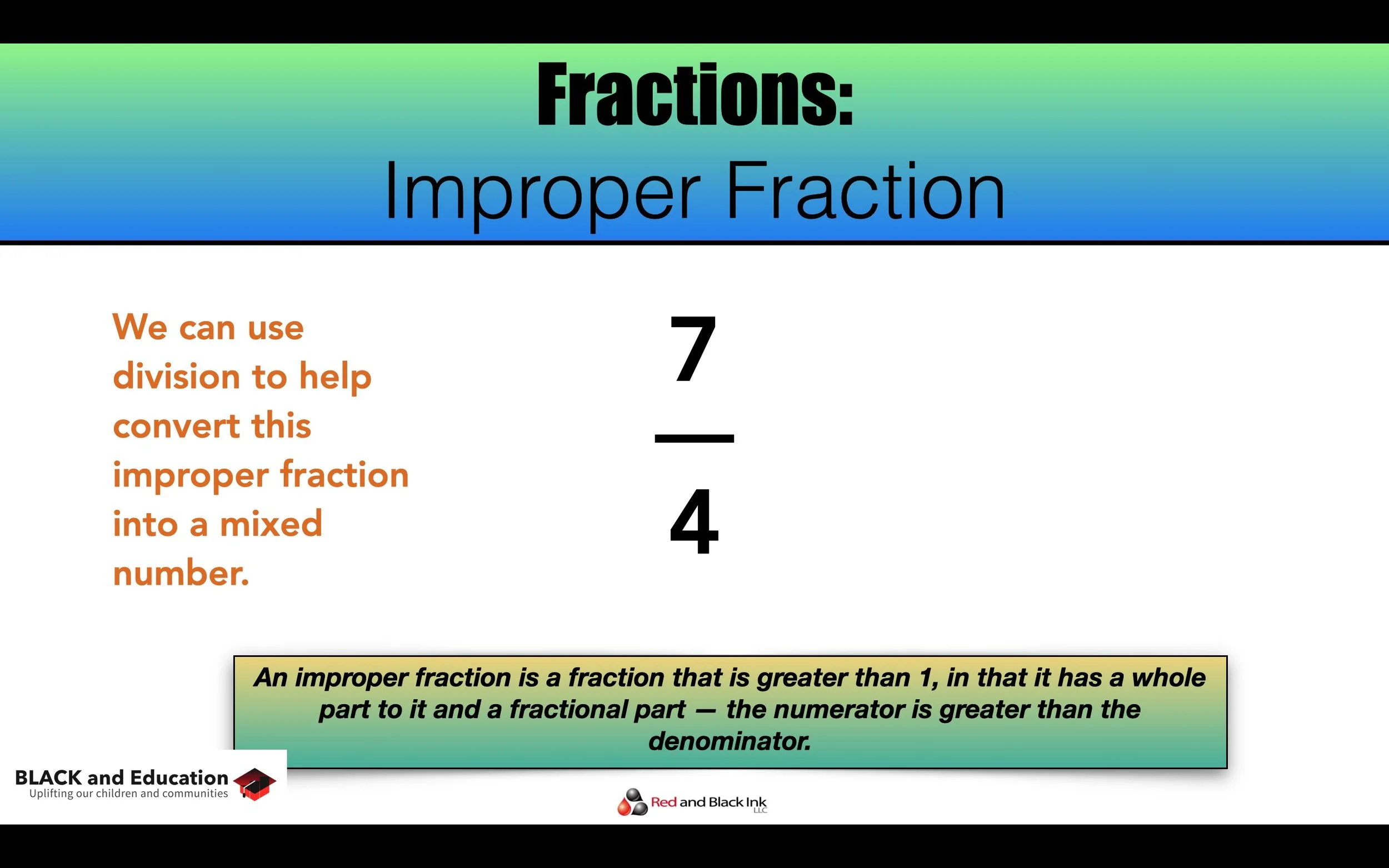Mixed Numbers and Improper Fractions
What is an Improper Fraction?
Well, we talked about how fractions are ways to divide something into equal parts. You assume that if something is a fraction, then it is less than 1. In fact, a proper fraction is a fraction where the numerator is less than the denominator, but things can be different. In the example below, 7/4 — the numerator is larger than the denominator.
When the numerator is larger than the denominator it is called an improper fraction. This really means that the denominator can go into the numerator at least one whole time—so we are really dealing with a number that has a whole part (or parts) to it and a fractional part; that’s what a mixed number is.
If we want to convert an improper fraction into a mixed number, we can simply divide the numerator by the denominator, take the whole part as our whole number, then take the remainder as the new numerator and leave the denominator the same.
This is where being able to division by hand comes into play.
You can see that 7 ÷ 4 is equal to 1 3/4 or 1.75.
Now if you had a mixed number to start with, and you wanted to convert it into a fraction, you could multiply the denominator by the whole number, add that result to the numerator—to get the new numerator, and keep the denominator the same.
So, you can see that an improper fraction is really a mixed number and that you can convert a mixed number into an improper fraction and/or you can convert an improper fraction into a mixed number.



